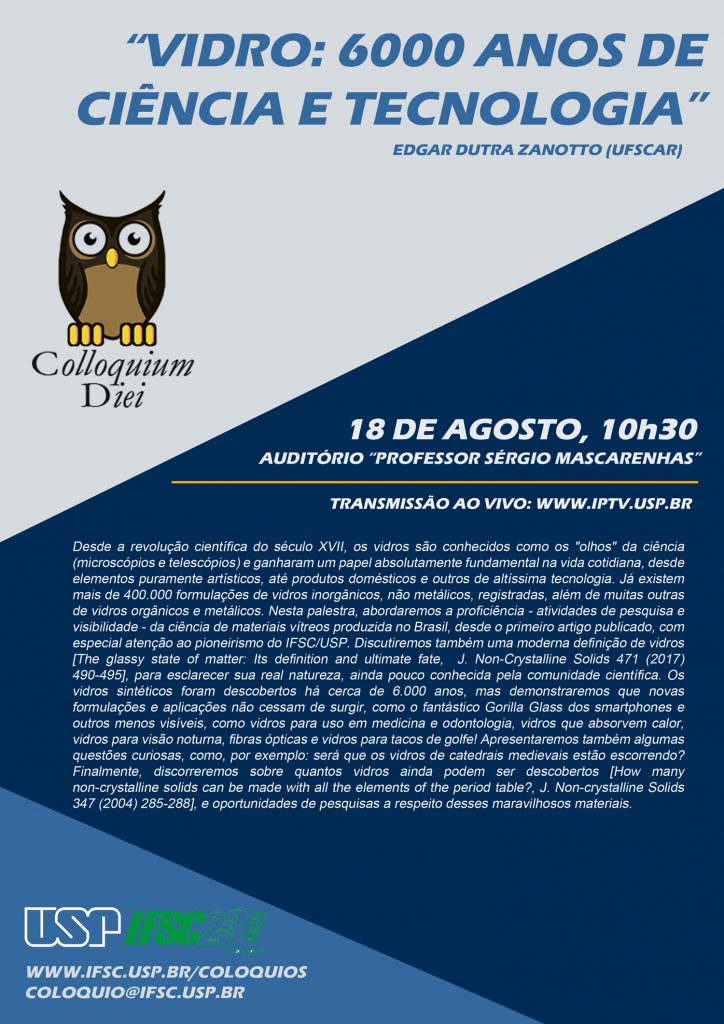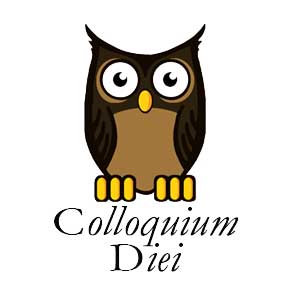
Colóquios e Seminários


Colloquium diei: “Luz em antimatéria”
Data: 04 de Agosto
Hora: 10h30
Local: Auditório “Prof. Sérgio Mascarenhas”
Palestrante: Prof. Cláudio Lenz Cezar (UFRJ)
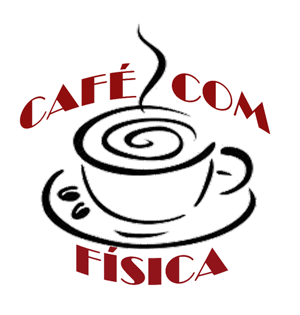
Café com Física: “Dynamics of a j =3/2 quantum spin liquid”
Data: 05 de Julho de 2017
Hora: 16h30
Local: sala 146 (Prédio dos LEF’s)
Palestrante: Willian Natori (IFSC/USP)

Colloquium diei: “Produtos Naturais da Biodiversidade Brasileira”
 Espécies de plantas biossintetizam uma grande variedade de metabolitos secundários, desempenhando papel vital na regulação e adaptação dos organismos num determinado ecossistema. Também são muito importantes para regular diversas funções que são fundamentais para a interações planta/planta; planta/inseto, planta/animal, resistência contra pragas e doenças, atração de polinizadores e interação com microrganismos simbióticos, essenciais para a manutenção da biodiversidade terrestes e marinha. Os produtos naturais são importantes para o entendimento dessa engrenagem fascinante que é a diversidade químico-biológica da natureza e modelos moleculares valiosos para a síntese e descoberta de novos modelos de fármacos e outros bioprodutos. Assim, a rica biodiversidade brasileira constitui-se numa excelente fonte de conhecimento novo para diversas áreas de pesquisa e, em especial as das ciências biológicas, químicas e farmacológicas, incluindo, a química medicinal e a descoberta de novos fármacos. O programa BIOTA/FAPESP foi criado em março de 1999 e entre os vários projetos que iniciaram este programa, ressalta-se o primeiro voltado para a busca busca de produtos naturais bioativos do Cerrado e da Mata Atlântica do Estado de São Paulo, com o objetivo de identificar hits e leads a partir da nossa biodiversidade. Nestes 20 anos de pesquisa no NuBBE, mais de 700 substâncias foram isoladas, alguns poucos exemplos serão destacados nesta conferência, onde serão apresentadas as substâncias com maior potencial como protótipos. Decorrente do conjunto de informações armazenados no NuBBE durante este período, recentemente dois grandes projetos aprovados: CEPID CIBFar (Coordenação pelo Prof. Glaucius Oliva, IF-USP, São Carlos, processo no. 2013/07600-3) e INCT NioNat (Coordenação Vanderlan da S. Bolzani, processo CNPq no Processo CNPq: 465637/2014-0 e FAPESP no. 2014/50926-0) as pesquisas foram dirigidas para os produtos naturais já isolados, com potencial para posterior desenvolvimento, visando potenciais bioprodutos. Nesta premissa, a primeira base de dados de produtos naturais da biodiversidade brasileira também está sendo organizada e esses dados serão apresentados. Para alguns produtos naturais bioativos isolados em baixa concentração, mas com potencial para ensaios farmacológicos e toxicológicos mais avançados, foram selecionados para síntese, visando maior concentração dos princípios ativos para realização de prova de conceito.
Espécies de plantas biossintetizam uma grande variedade de metabolitos secundários, desempenhando papel vital na regulação e adaptação dos organismos num determinado ecossistema. Também são muito importantes para regular diversas funções que são fundamentais para a interações planta/planta; planta/inseto, planta/animal, resistência contra pragas e doenças, atração de polinizadores e interação com microrganismos simbióticos, essenciais para a manutenção da biodiversidade terrestes e marinha. Os produtos naturais são importantes para o entendimento dessa engrenagem fascinante que é a diversidade químico-biológica da natureza e modelos moleculares valiosos para a síntese e descoberta de novos modelos de fármacos e outros bioprodutos. Assim, a rica biodiversidade brasileira constitui-se numa excelente fonte de conhecimento novo para diversas áreas de pesquisa e, em especial as das ciências biológicas, químicas e farmacológicas, incluindo, a química medicinal e a descoberta de novos fármacos. O programa BIOTA/FAPESP foi criado em março de 1999 e entre os vários projetos que iniciaram este programa, ressalta-se o primeiro voltado para a busca busca de produtos naturais bioativos do Cerrado e da Mata Atlântica do Estado de São Paulo, com o objetivo de identificar hits e leads a partir da nossa biodiversidade. Nestes 20 anos de pesquisa no NuBBE, mais de 700 substâncias foram isoladas, alguns poucos exemplos serão destacados nesta conferência, onde serão apresentadas as substâncias com maior potencial como protótipos. Decorrente do conjunto de informações armazenados no NuBBE durante este período, recentemente dois grandes projetos aprovados: CEPID CIBFar (Coordenação pelo Prof. Glaucius Oliva, IF-USP, São Carlos, processo no. 2013/07600-3) e INCT NioNat (Coordenação Vanderlan da S. Bolzani, processo CNPq no Processo CNPq: 465637/2014-0 e FAPESP no. 2014/50926-0) as pesquisas foram dirigidas para os produtos naturais já isolados, com potencial para posterior desenvolvimento, visando potenciais bioprodutos. Nesta premissa, a primeira base de dados de produtos naturais da biodiversidade brasileira também está sendo organizada e esses dados serão apresentados. Para alguns produtos naturais bioativos isolados em baixa concentração, mas com potencial para ensaios farmacológicos e toxicológicos mais avançados, foram selecionados para síntese, visando maior concentração dos princípios ativos para realização de prova de conceito.
10h30; auditório “Professor Sérgio Mascarenhas”
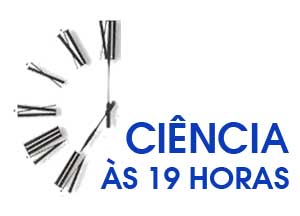
Palestra: “Astrobiologia: estudando a vida no Universo”
 Uma das perguntas mais antigas que a humanidade se faz é “Estamos sozinhos no Universo?”. Na tentativa de responder a essa e outras questões extremamente complexas da natureza, como a origem da vida, foi criado um novo campo de pesquisa, a Astrobiologia, a qual reúne pesquisadores de diferentes áreas, trabalhando em colaboração Os cientistas, atuando como exploradores modernos, vasculham a vida em nosso planeta, desde as profundezas oceânicas até o alto das montanhas, procurando entender como ela surgiu, evoluiu e, em muitos casos, extinguiu-se, com o passar dos bilhões de anos de história da Terra. E hoje esse esforço se estende para além da Terra, para os planetas e luas do Sistema Solar e mesmo para planetas muito distantes, orbitando outras estrelas de nossa Galáxia. Talvez consigamos encontrar indícios de vida extraterrestre, talvez não, mas o importante é que, no caminho, estamos compreendendo melhor os processos naturais que permitiram que um fenômeno tão complexo como a vida tenha surgido e evoluído em nosso Universo.
Uma das perguntas mais antigas que a humanidade se faz é “Estamos sozinhos no Universo?”. Na tentativa de responder a essa e outras questões extremamente complexas da natureza, como a origem da vida, foi criado um novo campo de pesquisa, a Astrobiologia, a qual reúne pesquisadores de diferentes áreas, trabalhando em colaboração Os cientistas, atuando como exploradores modernos, vasculham a vida em nosso planeta, desde as profundezas oceânicas até o alto das montanhas, procurando entender como ela surgiu, evoluiu e, em muitos casos, extinguiu-se, com o passar dos bilhões de anos de história da Terra. E hoje esse esforço se estende para além da Terra, para os planetas e luas do Sistema Solar e mesmo para planetas muito distantes, orbitando outras estrelas de nossa Galáxia. Talvez consigamos encontrar indícios de vida extraterrestre, talvez não, mas o importante é que, no caminho, estamos compreendendo melhor os processos naturais que permitiram que um fenômeno tão complexo como a vida tenha surgido e evoluído em nosso Universo.

Colloquium diei: “Desafios e pesadelos da resistência a antibióticos”
 Os desafios na resistência a antibióticos são antigos…Enterobactérias resistentes aos antibióticos tem sido frequentemente relatadas em todo o mundo e representa grande preocupação devido às opções terapêuticas limitadas disponíveis. O conhecimento sobre a genética da resistência exibida por bactérias produtoras de ESBL e carbapenemases contribui para compreender a disseminação de clones resistentes, o que pode reduzir a morbidade e mortalidade dos pacientes. No cenário global, o conhecimento do ambiente genético dos genes de resistência, incluindo integrons, transposons e plasmídeos, agrega impacto na caracterização epidemiológica de clones resistentes e também no estudo da biologia e evolução das bactérias.
Os desafios na resistência a antibióticos são antigos…Enterobactérias resistentes aos antibióticos tem sido frequentemente relatadas em todo o mundo e representa grande preocupação devido às opções terapêuticas limitadas disponíveis. O conhecimento sobre a genética da resistência exibida por bactérias produtoras de ESBL e carbapenemases contribui para compreender a disseminação de clones resistentes, o que pode reduzir a morbidade e mortalidade dos pacientes. No cenário global, o conhecimento do ambiente genético dos genes de resistência, incluindo integrons, transposons e plasmídeos, agrega impacto na caracterização epidemiológica de clones resistentes e também no estudo da biologia e evolução das bactérias.
10h30; auditório “Professor Sérgio Mascarenhas”

Café com Física: “Modified algebraic Bethe ansatz”
 We will discuss the basic features of the modified algebraic Bethe ansatz. In particular, we will present the construction of the off-shell Bethe vector for the Heisenberg XXX chain with general integrable boundary conditions (twisted and open). The scalar product between the on-shell Bethe vector and its off-shell dual, namely, the modified Slavnov formula, will be also discussed.
We will discuss the basic features of the modified algebraic Bethe ansatz. In particular, we will present the construction of the off-shell Bethe vector for the Heisenberg XXX chain with general integrable boundary conditions (twisted and open). The scalar product between the on-shell Bethe vector and its off-shell dual, namely, the modified Slavnov formula, will be also discussed.
High-Energy Physics Seminars: “Exploring the high energy frontier with neutrinos”
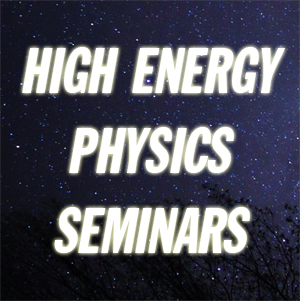 In the latest years a cumulative evidence for a new phenomena in particle physics called neutrino oscillation appears and culminate with the Nobel Prize in physics in 2015 for T. Kajita and A. McDonald for the experimental discovery of neutrino oscillation. At the present there are an intense effort in Brazil and other countries to explore this new frontier and try to elucidate the implications of this phenomena for particle physics. In this talk I will describe the current status and the very interesting topics that we are pursuing to elucidate from the theoretical and experimental point of view.
In the latest years a cumulative evidence for a new phenomena in particle physics called neutrino oscillation appears and culminate with the Nobel Prize in physics in 2015 for T. Kajita and A. McDonald for the experimental discovery of neutrino oscillation. At the present there are an intense effort in Brazil and other countries to explore this new frontier and try to elucidate the implications of this phenomena for particle physics. In this talk I will describe the current status and the very interesting topics that we are pursuing to elucidate from the theoretical and experimental point of view.
Colloquium diei: “A doença de Parkinson: neuroproteção e tratamento”
 A doença de Parkinson representa uma das doenças neurodegenerativas relacionadas à idade mais comuns em seres humanos, não tem cura, e o seu custo sócio-econômico é elevado. O tratamento atual da doença restringe-se ao controle sintomático com drogas de ação dopaminérgica como a L-DOPA (L-3, 4-dihydroxyphenylalanine) molécula precursora da síntese de dopamina. Porém, o tratamento está associado ao aparecimento de complicações sensoriais e motoras, estas últimas após em média cinco anos. Cerca de 50% dos pacientes desenvolvem a redução gradativa na duração do efeito da medicação (wearing off) e discinesia. A discinesia induzida pelo tratamento com L-DOPA se caracteriza pela presença de movimentos involuntários anormais que incapacitam o paciente. Descobrimos que inibidores da síntese de óxido nítrico (NO) bloqueiam o desenvolvimento da discinesia, observação que foi reproduzida em macacos. Esta descoberta tem potencial uso terapêutico desde que não se conhece a causa da discinesia. Pode contribuir para a manifestação da discinesia processo inflamatório demonstrado no cérebro de pacientes Parkinsonianos (in vivo e post-mortem) e em modelos animais. O NO foi originalmente descrito como mediador da Inflamação, e tanto o NO como a sintase de óxido nítrico neuronial (nNOS) foram associados tanto à atividade pró-inflamatória como à atividade anti-inflamatória. Apresentaremos resultados que mostram que o sistema nitrérgico participa do desencadeamento e manutenção da discinesia induzida pelo tratamento crônico com L-DOPA e que interage com componentes do processo inflamatório. Adicionalmente apresentaremos resultados recentes que mostram a atividade neuroprotetora do antibiótico doxiciclina na doença de Parkinson.
A doença de Parkinson representa uma das doenças neurodegenerativas relacionadas à idade mais comuns em seres humanos, não tem cura, e o seu custo sócio-econômico é elevado. O tratamento atual da doença restringe-se ao controle sintomático com drogas de ação dopaminérgica como a L-DOPA (L-3, 4-dihydroxyphenylalanine) molécula precursora da síntese de dopamina. Porém, o tratamento está associado ao aparecimento de complicações sensoriais e motoras, estas últimas após em média cinco anos. Cerca de 50% dos pacientes desenvolvem a redução gradativa na duração do efeito da medicação (wearing off) e discinesia. A discinesia induzida pelo tratamento com L-DOPA se caracteriza pela presença de movimentos involuntários anormais que incapacitam o paciente. Descobrimos que inibidores da síntese de óxido nítrico (NO) bloqueiam o desenvolvimento da discinesia, observação que foi reproduzida em macacos. Esta descoberta tem potencial uso terapêutico desde que não se conhece a causa da discinesia. Pode contribuir para a manifestação da discinesia processo inflamatório demonstrado no cérebro de pacientes Parkinsonianos (in vivo e post-mortem) e em modelos animais. O NO foi originalmente descrito como mediador da Inflamação, e tanto o NO como a sintase de óxido nítrico neuronial (nNOS) foram associados tanto à atividade pró-inflamatória como à atividade anti-inflamatória. Apresentaremos resultados que mostram que o sistema nitrérgico participa do desencadeamento e manutenção da discinesia induzida pelo tratamento crônico com L-DOPA e que interage com componentes do processo inflamatório. Adicionalmente apresentaremos resultados recentes que mostram a atividade neuroprotetora do antibiótico doxiciclina na doença de Parkinson.
High-Energy Physics Seminars: “Topology Change of Spacetime”
 Emergent gravity is based on the Darboux theorem or the Moser lemma in symplectic geometry stating that the electromagnetic force can always be eliminated by a local coordinate transformation as far as U(1) gauge theory is defined on a spacetime with symplectic structure. In this approach, the spacetime geometry is defined by U(1) gauge fields on noncommutative (NC) spacetime. Accordingly the topology of spacetime is determined by the topology of NC U(1) gauge fields. We show that the topology change of spacetime is ample in emergent gravity and the subsequent resolution of spacetime singularity is possible in NC spacetime. Thus emergent gravity approach provides a well-defined mechanism for the topology change of spacetime which does not suffer from any singularity in sharp contrast to general relativity.
Emergent gravity is based on the Darboux theorem or the Moser lemma in symplectic geometry stating that the electromagnetic force can always be eliminated by a local coordinate transformation as far as U(1) gauge theory is defined on a spacetime with symplectic structure. In this approach, the spacetime geometry is defined by U(1) gauge fields on noncommutative (NC) spacetime. Accordingly the topology of spacetime is determined by the topology of NC U(1) gauge fields. We show that the topology change of spacetime is ample in emergent gravity and the subsequent resolution of spacetime singularity is possible in NC spacetime. Thus emergent gravity approach provides a well-defined mechanism for the topology change of spacetime which does not suffer from any singularity in sharp contrast to general relativity.
Café com Física: “Quantum speed limits”
 One of the most widely known building blocks of modern physics is Heisenberg’s indeterminacy principle. Among the different statements of this fundamental property of the full quantum mechanical nature of physical reality, the uncertainty relation for energy and time has a special place. Its interpretation and its consequences have inspired continued research efforts for almost a century. In its modern formulation, the uncertainty relation is understood as setting a fundamental bound on how fast any quantum system can evolve. In this Colloquium we will discuss important milestones, such as the Mandelstam-Tamm and the Margolus-Levitin bounds on the quantum speed limit, and summarize recent applications in a variety of current research fields — including quantum information theory, quantum computing, and quantum thermodynamics amongst several others. To bring order and to provide an access point into the many different notions and concepts, we will group the various approaches into the minimal time approach and the geometric approach, where the former relies on quantum control theory, and the latter arises from measuring the distinguishability of quantum states.
One of the most widely known building blocks of modern physics is Heisenberg’s indeterminacy principle. Among the different statements of this fundamental property of the full quantum mechanical nature of physical reality, the uncertainty relation for energy and time has a special place. Its interpretation and its consequences have inspired continued research efforts for almost a century. In its modern formulation, the uncertainty relation is understood as setting a fundamental bound on how fast any quantum system can evolve. In this Colloquium we will discuss important milestones, such as the Mandelstam-Tamm and the Margolus-Levitin bounds on the quantum speed limit, and summarize recent applications in a variety of current research fields — including quantum information theory, quantum computing, and quantum thermodynamics amongst several others. To bring order and to provide an access point into the many different notions and concepts, we will group the various approaches into the minimal time approach and the geometric approach, where the former relies on quantum control theory, and the latter arises from measuring the distinguishability of quantum states.
Colloquium diei: “Confinamento e desconfinamento em condições extremas”
 Nesta palestra abordarei o conhecimento atual da estrutura mais profunda da matéria do nosso dia-a-dia e os mais recentes esforços na direção de compreender a sua natureza. A cromodinâmica quântica é a teoria fundamental que descreve a interação entre quarks e glúons, os constituintes fundamentais dos núcleos atômicos.
Nesta palestra abordarei o conhecimento atual da estrutura mais profunda da matéria do nosso dia-a-dia e os mais recentes esforços na direção de compreender a sua natureza. A cromodinâmica quântica é a teoria fundamental que descreve a interação entre quarks e glúons, os constituintes fundamentais dos núcleos atômicos.
Apesar de extremamente bem sucedida, ainda contém questões fundamentais em aberto. Uma das mais proeminentes é o mecanismo de confinamento, que garante que quarks e gluons nunca são observados diretamente e estão sempre confinados no interior de hadrons, como os prótons e os nêutrons. Revisarei alguns modelos teóricos que tentam explicar o confinamento e outros esforços para criar ou observar um novo estado da matéria em condições extremas, em que o desconfinamento poderia acontecer. Os sistemas físicos abordados envolverão desde colisões ultra-relativísticas de íons pesados até o interior de estrelas compactas.
Seminários do Grupo de Óptica: “A Missão Garatéa e tecnologias”
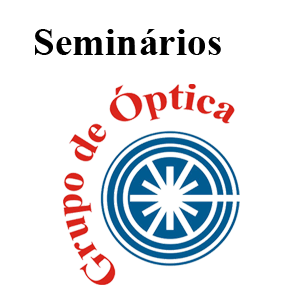 Através da explanação dos motivadores da missão Garatéa, o palestrante abordará a miríade de tecnologias a serem desenvolvidas para execução do projeto mais ambicioso da missão, a Garatéa-L. Nessa tentativa da primeira ida de tecnologia brasileira para a lua, a USP São Carlos exerce papel fundamental na missão, oferecendo a elaboração da plataforma de instrumentação embarcada na sonda, bem como suporte para confecção dos sistemas que garantirão a execução dos experimentos biológicos.
Através da explanação dos motivadores da missão Garatéa, o palestrante abordará a miríade de tecnologias a serem desenvolvidas para execução do projeto mais ambicioso da missão, a Garatéa-L. Nessa tentativa da primeira ida de tecnologia brasileira para a lua, a USP São Carlos exerce papel fundamental na missão, oferecendo a elaboração da plataforma de instrumentação embarcada na sonda, bem como suporte para confecção dos sistemas que garantirão a execução dos experimentos biológicos.
Journal club: “New Development in Topology Physics”
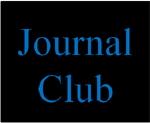 Honeycomb lattice plays an extremely important role in the course of development of topology physics [1]. Recently, we propose an all-dielectric topological photonic crystal derived from honeycomb structure. We identify a pseudo spin degree of freedom in electromagnetic modes hosted by honeycomb lattice, which can be explored for establishing topological EM states with time-reversal symmetry [2]. We demonstrate theoretically the nontrivial topology by showing photonic band inversion, and counter-propagating edge EM wave. I will show the recent experimental confirmation of this idea with microwaves [3]. Without requiring gyromagnetic, bi-anisotropic or piezo-magnetic materials, this topological photonic crystal can be fabricated easily and potentially is compatible to electronics. Finally I will discuss future perspective [4,5].
Honeycomb lattice plays an extremely important role in the course of development of topology physics [1]. Recently, we propose an all-dielectric topological photonic crystal derived from honeycomb structure. We identify a pseudo spin degree of freedom in electromagnetic modes hosted by honeycomb lattice, which can be explored for establishing topological EM states with time-reversal symmetry [2]. We demonstrate theoretically the nontrivial topology by showing photonic band inversion, and counter-propagating edge EM wave. I will show the recent experimental confirmation of this idea with microwaves [3]. Without requiring gyromagnetic, bi-anisotropic or piezo-magnetic materials, this topological photonic crystal can be fabricated easily and potentially is compatible to electronics. Finally I will discuss future perspective [4,5].
Reference:
[1] H.-M. Weng, R. Yu, X. Hu, X. Dai and Z. Fang, Adv. Phys. vol. 64, 227 (2015)
[2] L.-H. Wu and X. Hu: Phys. Rev. Lett. vol. 114, 223901 (2015)
[3] Y.-T. Yang, J.-H. Jiang, X. Hu and Z.-H. Hang: arXiv.1610.07780
[4] L.-H. Wu and X. Hu: Sci. Rep. vol. 6, 24347 (2016)
[5] T. Kariyado and X. Hu: arXiv.1607.08706
Seminários do Grupo de Óptica: “Excitation of an Atomic Transition with a Vortex Beam”
 I will discuss experimental results where orbital angular momentum from a photon was transferred to the internal electronic degrees of freedom of a single atom. We observed strongly modified selection rules showing that an atom can absorb two quanta of angular momentum from a single photon: one from the spin and another from the spatial structure of the beam. Moreover, the results show in some cases, the longitudinal component of the field in a vortex beam plays a crucial role in determining the interaction characteristics. Furthermore, I’ll show that parasitic ac-Stark shifts from off-resonant transitions are suppressed in the center of the vortex beam. The experiments were done probing a quadrupole transition in a single trapped Calcium ion.
I will discuss experimental results where orbital angular momentum from a photon was transferred to the internal electronic degrees of freedom of a single atom. We observed strongly modified selection rules showing that an atom can absorb two quanta of angular momentum from a single photon: one from the spin and another from the spatial structure of the beam. Moreover, the results show in some cases, the longitudinal component of the field in a vortex beam plays a crucial role in determining the interaction characteristics. Furthermore, I’ll show that parasitic ac-Stark shifts from off-resonant transitions are suppressed in the center of the vortex beam. The experiments were done probing a quadrupole transition in a single trapped Calcium ion.
Colloquium diei: “Zika virus: o desafio do desenvolvimento de fármacos antivirais”
 O objetivo principal deste projeto é conhecer com detalhe atômico a estrutura de todas as proteinas do Zika Virus, e com base nesta informação buscar por ligantes e anticorpos que possam ser uteis para o desenvolvimento de candidatos a fármacos antivirais e/ou diagnósticos específicos para o ZIKV. O Planejamento Molecular Baseado em Estruturas, particularmente na descoberta de novos compostos bioativos (fármacos, biofármacos, anticorpos, vacinas) é hoje a tecnologia mais eficiente e de melhor relação custo/benefício para o desenvolvimento de novos fármacos, podendo contribuir em todas as etapas do processo, desde a descoberta de compostos de partida, sua otimização (afinidade, especificidade, eficácia, efeitos colaterais) e aprovação pelos organismos competentes. Neste seminário vamos revisar os mecanismos de infecção e seus componentes moleculares, com destaque para a recente elucidação em nosso laboratório da estrutura do domínio RNA polimerase RNA-dependente da proteina NS5 do virus Zika e as perspectivas de desenvolvimento de compostos com potencial atividade antiviral para a terapêutica e profilaxia da doença.
O objetivo principal deste projeto é conhecer com detalhe atômico a estrutura de todas as proteinas do Zika Virus, e com base nesta informação buscar por ligantes e anticorpos que possam ser uteis para o desenvolvimento de candidatos a fármacos antivirais e/ou diagnósticos específicos para o ZIKV. O Planejamento Molecular Baseado em Estruturas, particularmente na descoberta de novos compostos bioativos (fármacos, biofármacos, anticorpos, vacinas) é hoje a tecnologia mais eficiente e de melhor relação custo/benefício para o desenvolvimento de novos fármacos, podendo contribuir em todas as etapas do processo, desde a descoberta de compostos de partida, sua otimização (afinidade, especificidade, eficácia, efeitos colaterais) e aprovação pelos organismos competentes. Neste seminário vamos revisar os mecanismos de infecção e seus componentes moleculares, com destaque para a recente elucidação em nosso laboratório da estrutura do domínio RNA polimerase RNA-dependente da proteina NS5 do virus Zika e as perspectivas de desenvolvimento de compostos com potencial atividade antiviral para a terapêutica e profilaxia da doença.
High-Energy Physics Seminars: “Recent status of dark matter searches with cosmic rays”
 Several observations provide evidence an invisible component, called Dark Matter, permeating the Cosmos, which exerts its effects through the gravitational force. Yet, so far, searches for the dark matter particle have been unfruitful. A complementary mean to investigate the nature of dark matter is through the so-called indirect detection via cosmic rays. In the talk I will discuss the principles of dark matter indirect detection via cosmic rays, and the main cosmic-ray observations used for this type of dark matter searches. In the second part, I will discuss more in detail the case of cosmic-ray antiprotons, which have been recently measured by the AMS-02 experiment with high precision, and which show an interesting hint for a dark matter particle with a mass of about 100 GeV and annihilation cross section close to the thermal relic value.
Several observations provide evidence an invisible component, called Dark Matter, permeating the Cosmos, which exerts its effects through the gravitational force. Yet, so far, searches for the dark matter particle have been unfruitful. A complementary mean to investigate the nature of dark matter is through the so-called indirect detection via cosmic rays. In the talk I will discuss the principles of dark matter indirect detection via cosmic rays, and the main cosmic-ray observations used for this type of dark matter searches. In the second part, I will discuss more in detail the case of cosmic-ray antiprotons, which have been recently measured by the AMS-02 experiment with high precision, and which show an interesting hint for a dark matter particle with a mass of about 100 GeV and annihilation cross section close to the thermal relic value.
Filosofísica: “Como baixar e instalar softwares: a evolução e a busca pela razão”
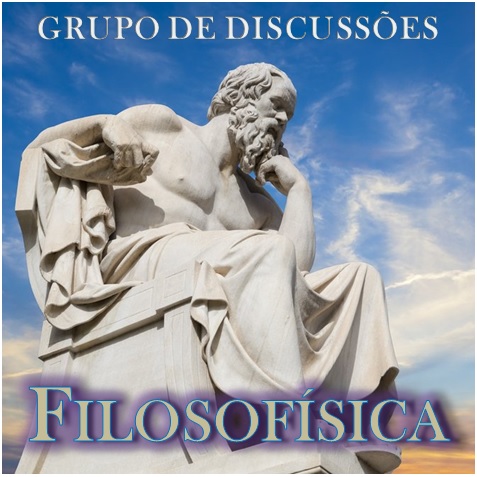 Nós evoluímos e adquirimos capacidades para resolver problemas em cenários bem diferentes do que vivemos no atual ambiente cultural. Mas em cima de nossos instintos para navegar em selvas e savanas, possuímos uma grande ferramenta que nos permite aprender a aprender e generalizar o que aprendemos, de não só usar informação, mas manipular informação. Com isso temos a noção de que temos razão. Nessa apresentação do filosofísica, discutiremos esses processos e veremos empiricamente que ter razão não é tão simples quanto parece.
Nós evoluímos e adquirimos capacidades para resolver problemas em cenários bem diferentes do que vivemos no atual ambiente cultural. Mas em cima de nossos instintos para navegar em selvas e savanas, possuímos uma grande ferramenta que nos permite aprender a aprender e generalizar o que aprendemos, de não só usar informação, mas manipular informação. Com isso temos a noção de que temos razão. Nessa apresentação do filosofísica, discutiremos esses processos e veremos empiricamente que ter razão não é tão simples quanto parece.
Filosofísica: “Computação inspirada na natureza: inteligência artificial x adaptatividade”
 A área da Computação Bioinspirada trata de modelos computacionais de processos naturais como as Redes Neurais Artificiais, Inteligência de Enxames, Algoritmos Genéticos, e até mesmo Colônias de Insetos Artificiais. A discussão irá abordar estes temas e sua aplicação na indústria. Com a Computação Bioinspirada pode-se construir Modelos de Controle Adaptativos, nos quais cognição e evolucionismo são combinados para abordar a execução de tarefas em ambientes dinamicamente mutáveis. Será apresentado uma noção geral de Computação Bioinspirada e suas principais aplicações desenvolvidas no Instituto de Ciências Matemáticas e de Computação (ICMC-USP), no Laboratório de Computação Reconfigurável.
A área da Computação Bioinspirada trata de modelos computacionais de processos naturais como as Redes Neurais Artificiais, Inteligência de Enxames, Algoritmos Genéticos, e até mesmo Colônias de Insetos Artificiais. A discussão irá abordar estes temas e sua aplicação na indústria. Com a Computação Bioinspirada pode-se construir Modelos de Controle Adaptativos, nos quais cognição e evolucionismo são combinados para abordar a execução de tarefas em ambientes dinamicamente mutáveis. Será apresentado uma noção geral de Computação Bioinspirada e suas principais aplicações desenvolvidas no Instituto de Ciências Matemáticas e de Computação (ICMC-USP), no Laboratório de Computação Reconfigurável.




